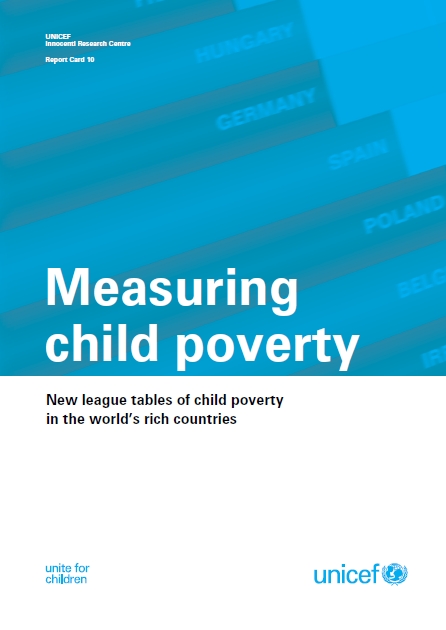
In Portugal about three-quarters of children living in households in which there is no adult who has a paid job are in a situation of deprivation.
According to the report published recently by UNICEF, 27.4% of children living in Portugal in 2009 were in a situation of deprivation. This means that this part of population aged 1-16 years had no access to at least two essential goods included in a longer list of 14 indicators, such as: taking three meals a day, having an access to the Internet, getting some new clothes or having possibility to celebrate some special occasions (see full list of indicators on p. 2 of the report). This proportion decreases to 23.0% if the number of goods that children do not have access is equal to or greater than three, 17.8% when it is four or more and 13.8% concerning lack of the access to 5 or more essential goods. The mean values of these four indicators in the 29 European countries analyzed in the report are, adequately: 13.3%, 9.8%, 7.4% and 5.8%. Therefore, the Portuguese results are significantly above the ones found in the totality of 29 European countries analyzed in the study. Although Romania, Hungary and Latvia for this indicator represents results even more distressing than Portugal (see p. 13 of the report).The value of the children deprivation indicator increases remarkably in Portugal among children living in households where no adult has paid work (73.6%) and those living in single parent families (46.5%). Although less evident, the value of this indicator also rises among children living in families where adults have low levels of school education (37.9%) and those who come from families in which at least one parent was born outside Portugal (33.6%). Such a family pattern enhances child deprivation and Portugal, also in this feature has the highest values in the universe of studied countries (see p. 24 of the report).
Report Measuring Child Poverty also presents information about the child poverty rate, which is calculated on a base of monetary income of households per ‘adult equivalent’. The value of the child poverty rate is calculated taking into account three relative poverty lines: 40%, 50% and 60% of median income in a given country. The results of this indicator for Portugal for each of the lines are defined, respectively, 9.6%, 14.7% and 22.7%. These are values that are well above the ones reached in most European countries, but considerably lower than presented by the United States. In this country, these results are, adequately, 16.6%, 23.1% and 31.1% (see p. 12 of the report).
Report Measuring Child Poverty also presents information about the child poverty rate, which is calculated on a base of monetary income of households per ‘adult equivalent’. The value of the child poverty rate is calculated taking into account three relative poverty lines: 40%, 50% and 60% of median income in a given country. The results of this indicator for Portugal for each of the lines are defined, respectively, 9.6%, 14.7% and 22.7%. These are values that are well above the ones reached in most European countries, but considerably lower than presented by the United States. In this country, these results are, adequately, 16.6%, 23.1% and 31.1% (see p. 12 of the report).
